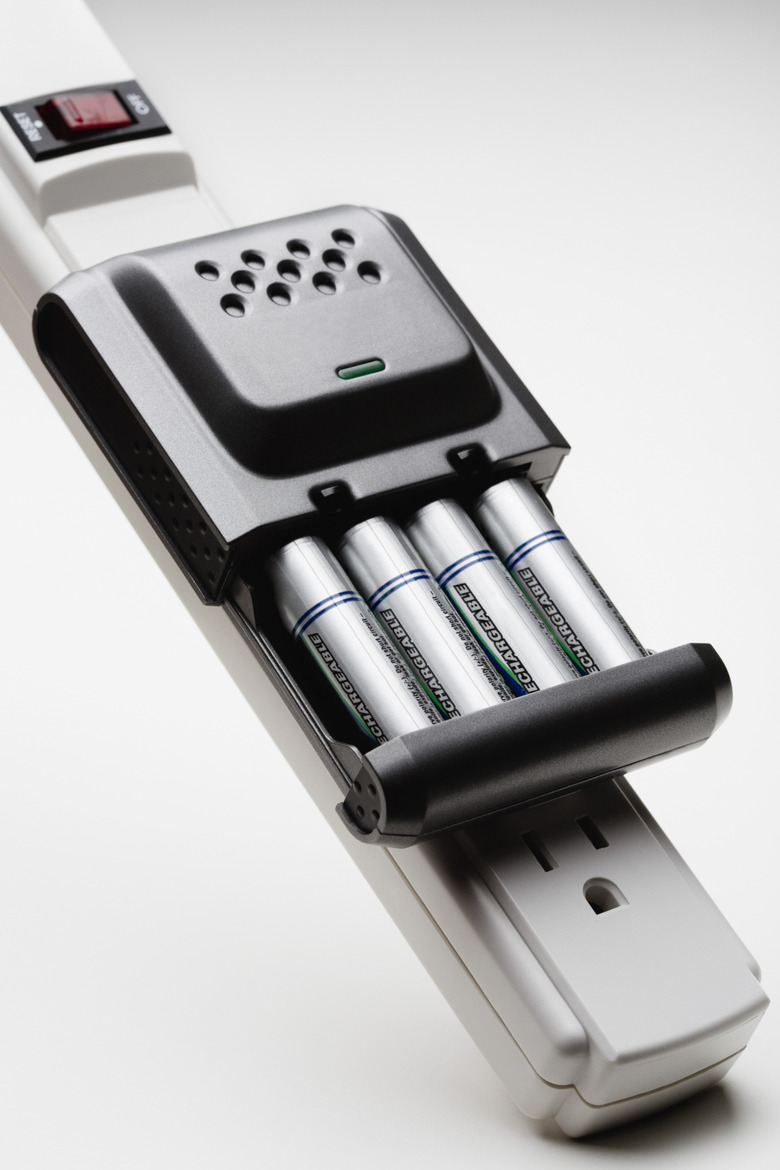Effective Ways Of Recycling And Reducing Non-Biodegradable Waste
Recycling is an old concept that's been repackaged with a new name. In older times it was called being frugal. Then, you patched the pot, put a new handle on the hammer and fixed broken furniture rather than discarding items that don't decompose. Then came modern materials that made possible inexpensive single- or short-term-use items and convenient packaging. For effective recycling and reducing of wastes, learn about what can be done with non-biodegradable items such as plastics, metal, glass and synthetics rather than putting them in the garbage.
Electronics
Electronics
Mobile phones, computers, televisions, DVD players and other electronic appliances are a large presence in today's world. When they break or need replacing, donate or recycle them to reclaim the valuable natural resources they contain and to conserve energy and avoid pollution. The U.S. Environmental Protection Agency states that for every 1 million cell phones recycled, 772 lbs. of silver, 35,000 lbs. of copper, 75 lbs. of gold and 33 lbs. of palladium are recovered. Locate convenient recycling centers for electronics. Most big box stores that sell electronics will also recycle them. Remove personal information and batteries, which need separate recycling, before donation.
Batteries
Batteries
Automotive batteries contain reclaimable but hazardous lead and sulfuric acid. Dispose of them at hazardous waste centers or return them for buyback when you purchase a replacement battery. Dry cell batteries that should be recycled include button and coin cell batteries used in watches and hearing aids, rechargeable AA, AAA, C, D and 9V batteries, and rechargeable lithium and lithium-ion batteries used in laptops. Metals recoverable from these batteries include:
- mercury
- silver
- lead
- manganese
- nickel
- cadmium
- lithium
Mercury, lead, nickel and cadmium are heavy metals that stay behind in the environment for a long time and can cause serious health problems.
Minimize Packaging Waste
Minimize Packaging Waste
Plastic bags and packaging materials can take up to 1,000 years to decompose in landfills, potentially leaking pollutants into the environment. Oceans contain about 100 million tons of floating plastic debris hazardous to marine life. Americans throw away around 33.6 million tons of plastic, recycling only 6.5 percent. Help reduce plastic use by consuming less packaging materials. Buy bulk grocery items instead of individual, separately-wrapped items. Select refillable containers of items like hand soap. Purchase concentrated products and dilute them at home. Elect not to use plastic bags, substituting biodegradable paper and cloth items or non-biodegradable reusable containers. Purchase multiple-use items, such as rechargeable batteries rather than single-use batteries.
Construction and Renovation
Construction and Renovation
When remodeling or constructing homes and buildings, much non-biodegradable waste results, with 270 million tons of construction and demolition wastes generated in 2003 in the U.S. Save and reuse useful building elements in remodeling, or recycle them to outlets that purchase salvaged materials. Recycle non-reusable building materials by separating them into categories such as wood, metal, concrete and rubble, all of which can be recycled into manufactured products. For new construction, look for building materials with recycled content.
References
- World Wildlife Fund: Biodegradable and Non-Biodegradable Materials
- U.S. Environmental Protection Agency: Electronics Donation and Recycling
- Duracell: Battery Care and Disposal: Recycling Batteries With Other Chemistries
- U.S. Environmental Protection Agency: Wastes: Resource Conservation: Common Wastes and Materials: Batteries
- Columbia University: The Earth Institute: State of the Planet: What Happens to All That Plastic?
- U.S. Environmental Protection Agency: Green Building: Reducing Waste
Cite This Article
MLA
Csanyi, Carolyn. "Effective Ways Of Recycling And Reducing Non-Biodegradable Waste" sciencing.com, https://www.sciencing.com/effective-ways-recycling-reducing-nonbiodegradable-waste-12336834/. 24 April 2017.
APA
Csanyi, Carolyn. (2017, April 24). Effective Ways Of Recycling And Reducing Non-Biodegradable Waste. sciencing.com. Retrieved from https://www.sciencing.com/effective-ways-recycling-reducing-nonbiodegradable-waste-12336834/
Chicago
Csanyi, Carolyn. Effective Ways Of Recycling And Reducing Non-Biodegradable Waste last modified August 30, 2022. https://www.sciencing.com/effective-ways-recycling-reducing-nonbiodegradable-waste-12336834/
